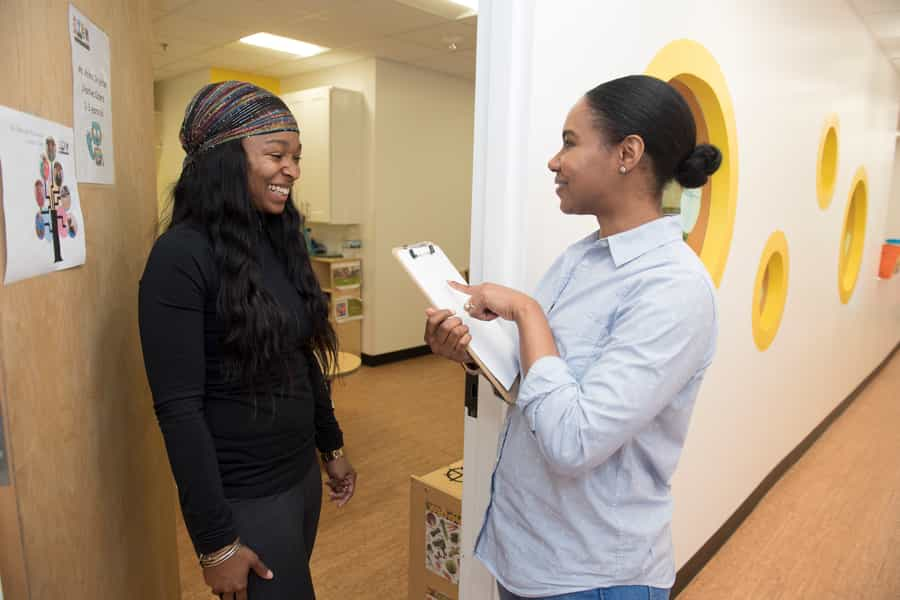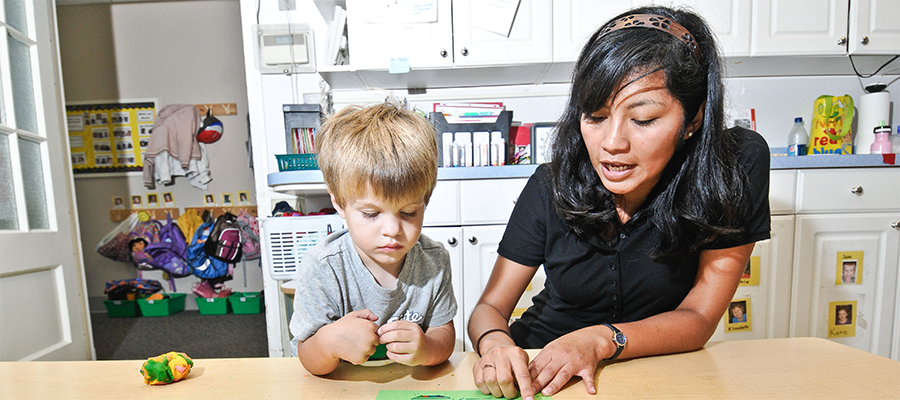
CCR&R staff play a key role in supporting caregivers in child care programs during the response and recovery phases. In-person visits have traditionally been an essential aspect of providing support services to child care providers, yet during the COVID-19 recovery phase these visits have likely been suspended in an effort to ensure the protection of children, caregivers, families and CCR&R staff. Organizations that offer in-person support visits should consult with the local and state health departments before reintroducing this service.
Virtual Visits
For the foreseeable future, virtual visits may be the best option because conducting on-site visits before the virus is contained could expedite the spread of illness. Effective strategies for virtual visits could include video conferencing apps like Zoom or FaceTime, communities of practice small group discussions, text messages, emails or phone calls.
Preparing for an On-site Visit
When it has been determined that in-person visits can be safely conducted, keep the following tips in mind:
- Prior to the visit, consider which parts of the visit must be conducted in-person and which parts of the visit can be done virtually to shorten visits or eliminate the need for an in-person visit. Consider if a no contact "drop and go" strategy can be used to deliver needed supplies.
- CCR&R staff members should conduct a personal health screening prior to making an in-person visit. Include these questions for assessment:
- Do I have a fever (100.4° F or above), shortness of breath, cough, or a sore throat? If so, do not visit the child care program and contact your primary health provider.
- Have I had contact with anyone who has known or possible exposure to the COVID-19 in the last 14 days? If so, do not visit the child care program.
- Have you or anyone in your household been recently confirmed (or presumptive positive) with COVID-19? If so, do not visit the child care program.
- Are you on home quarantine due to possible contact with someone with possible or confirmed COVID-19 or due to travel? If so, do not visit the child care program.
- Plan to limit number of CCR&R staff members who conduct each visit.
On-site Considerations for CCR&R Staff
Equip CCR&R staff with personal protective equipment, such as washable face coverings (provide at least two per staff, if possible). If staff will have hands on contact with children or contaminated surfaces, provide them with disposable gloves and alcohol-based sanitizer/wipes
Encourage staff to comply with required screening procedures at the child care site and wash their hands for at least 20 seconds with warm, soapy water before and after the visit. They should provide their own writing tools and limit the amount of paperwork or personal items that they bring into the program.
All CCR&R staff should practice effective social distancing by positioning themselves at least six feet from others, if possible.
Be Prepared to Discuss
While the primary purpose of on-site visits may not be related to COVID-19, CCR&R staff should be prepared to offer support on a variety of topics during this difficult period, including:
- Changes in child behaviors (clinginess, regression, aggression, hyperactivity, sadness)
- Restoring routines for children
- Mental health resources for children, parents, and caregivers
- Supply needs
- Reinforcement of routine infection control measures
- COVID-19 financial benefits/resources available
- Emergency plan updates —reflection on what went well; what didn’t go well
Following The Visit/Other Considerations
After the visit is over, encourage CCR&R staff to properly remove and clean face coverings and dispose of gloves (if used). They should also thoroughly clean phones, keys, personal equipment, as well as vehicles following the visit.
Don't forget to keep records of locations where on-site visits were made (including details of staff/classrooms visited).






